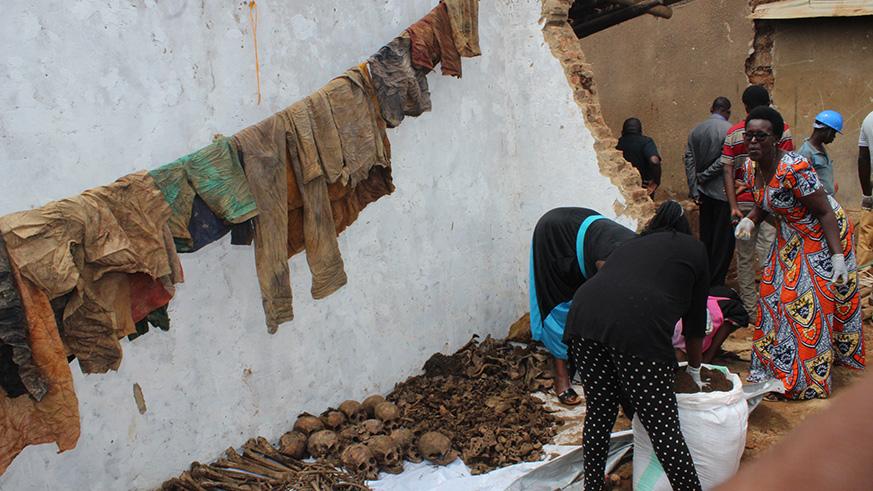
Jean d’Amour Mbonyinshuti, The New Times
Four mass graves holding many victims of the 1994 Genocide against the Tutsi have been discovered 24 years after the atrocities.
The graves were discovered in Kabeza village, Kabuga I cell in Rusororo Sector, Gasabo District, according to officials.
Works to exhume the bodies from the graves started recently but the first bodies were found on Sunday evening 17 metres in one of the mass graves.
So far about 200 bodies have been recovered and those exhuming the bodies are as deep as 25 metres.
According to local sources, the graves were dug in 1992 by then leaders with plans to dump in Tutsis as the country was under extreme pressure from new political parties and Rwanda Patriotic Army (RPA) fighting to liberate the country.
According to officials from Ibuka, the umbrella organisation for Genocide survivors, it is inconceivable that the mass graves have been there for years but local residents and area Genocide convicts had kept silent.
At one point, the government availed a tractor to exhume bodies but nothing could be found because the indicated spot was not the right one.
“The exercise is ongoing as we have identified four mass graves and we are yet to start exhuming three others, the information we have is that many people were dumped in these mass graves,” said Théogene Kabagambire, Ibuka president in Gasabo.
“Though some Genocide convicts apologised and some released after serving their sentences, they are doing little to reveal the whereabouts of our loved ones in order to be given a decent burial,” he added
According to Kabagambire, it is thought that about 3000 victims who came from surrounding communes (districts) were dumped in five mass graves which are in the area but one is yet to be identified.
Genocide survivors could be seen around the mass grave to see if they could be able to identify their perished relatives through the torn clothes they were putting on when they were killed.
Others were seen perusing through an old album which was discovered in the grave to see if it belonged to one of theirs.
“I have information that both my parents were killed and dumped in one of mass graves here and I came with hope that I can identify the clothes they were wearing when they left. I wish to be sure that they are here so that I give them a decent burial,” said Isabelle Uwimana, one of survivors.
Other survivors said it was difficult to promote unity and reconciliation in a situation whereby convicts as well as eye witnesses withhold information of the whereabouts of Genocide victims despite repetitive calls to reveal them.
Valens Ntaganira who lives behind the mass graves said he returned from Uganda and knew nothing about them.
“But people used to say that Tutsi were killed and dumped around here but the information they provided was misleading. All searches were in vain. I think those who were around withheld information willingly,” he said
Ibuka officials said that after exhuming all the bodies they will be given a decent burial.
